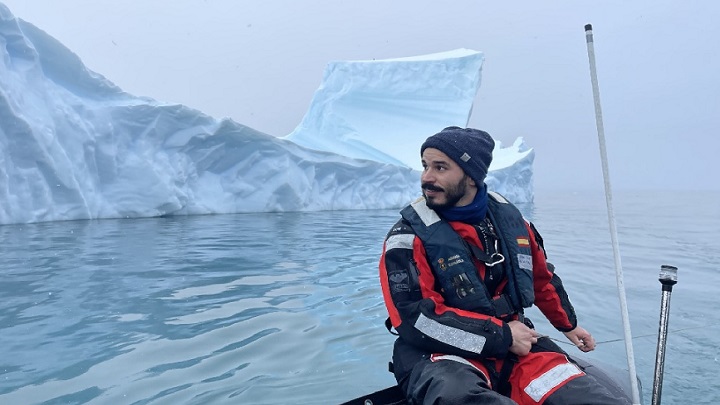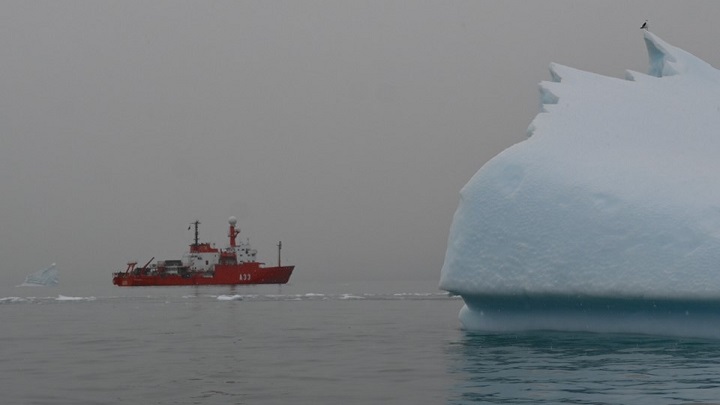UB study challenges the classical view of the origin of the Antarctic Circumpolar Current and warns of its vulnerability

The Circumpolar Current works as a regulator of the planet’s climate. Its origins were thought to have caused the formation of the permanent ice in Antarctica about 34 million years ago. Now, a study led by the University of Barcelona, the Instituto Andaluz de Ciencias de la Tierra (CSIC) and the Imperial College London (United Kingdom) has cast doubt on this theory, and has changed the understanding of how the ice sheet in Antarctic developed in the past, and what this could mean in the future as the planet’s climate changes.

The Circumpolar Current works as a regulator of the planet’s climate. Its origins were thought to have caused the formation of the permanent ice in Antarctica about 34 million years ago. Now, a study led by the University of Barcelona, the Instituto Andaluz de Ciencias de la Tierra (CSIC) and the Imperial College London (United Kingdom) has cast doubt on this theory, and has changed the understanding of how the ice sheet in Antarctic developed in the past, and what this could mean in the future as the planet’s climate changes.
The article, published in the journal Nature Geoscience, breaks with the classic view on the origins of the Antarctic Circumpolar Current, the largest marine current on Earth and which is decisive in the ocean circulation and climate change.
The most powerful ocean current on the planet
“To date, it was thought that the polar current boosted the formation of ice in Antarctica. Our study reveals that the oceanographic current dates later than the beginning of the Antarctic glaciation”, notes professor Dimitris Evangelinos, first author of the study and member of the Consolidated Research Group on Marine Geosciences of the UB’s Faculty of Earth Science and the Imperial College London.
“This discovery implies a change of scientific perspective in the field of Antarctic research on the interaction between the polar current and the Antarctic ice”, notes the expert. He continues: “The conclusions reveal that this current is sensitive to changes in climate conditions, a condition which endangers the climate protection of the frozen supercontinent”.
The article includes the collaboration of the teams from the UB’s Scientific and Technological Centres’ Laboratory of Paleomagnetism (CCiTUB) and Geosciences Barcelona (GEO3BCN-CSIC), the University of Granada, the University of Salamanca, and the University of Bordeaux, among others.
A change of paradigm in Antarctic research
The scientific community has debated for years about the origins and characteristics of the Antarctic Circumpolar Current. Besides connecting the three main basins of the Southern Ocean (Atlantic, Polar and Indic), this mass of polar waters regulates the transport of nutrients and energy to low-latitude regions.
“The Artic is the planetary region with the greatest impact on global warming. In the Antarctica, the effects are not that intense, and this is due to the thermal isolation generated by the circumpolar current, which prevents warm waters from reaching the white continent”, notes Professor Isabel Cacho, from the UB’s Department of Earth and Ocean Dynamics.
This study challenges the most accepted hypothesis, which states that the Antarctic Circumpolar Current appeared once the plate tectonics separated the Antarctic continent from the South American one and opened the Drake and Tasman Passages in the Southern Ocean.
“This means that the ice in Antarctica was formed prior to the existence of the circumpolar current”, says the researcher. “The new study proves that this circumpolar current is not what caused the Antarctic glaciation but the consequence of the ice formation”.
The study opens new perspectives for the understanding of the interaction between the Antarctic Circumpolar Current and the Antarctic ice sheet. “Understanding how these mechanisms work is essential to understand the current and future ocean dynamics and the past dynamics of the Southern Ocean, and more importantly, regarding the challenge of climate change”, conclude the experts.
Reference article:
Evangelinos, D.; Etourneau, J. et al. “Late Miocene onset of the modern Antarctic Circumpolar Current”. Nature Geoscience, January 2024. DOI: 10.1038/s41561-023-01356-3.
Multimedia gallery

Professor Isabel Cacho, member of the Consolidated Research Group on Marine Geosciences of the UB’s Faculty of Earth Science and the Imperial College London.

